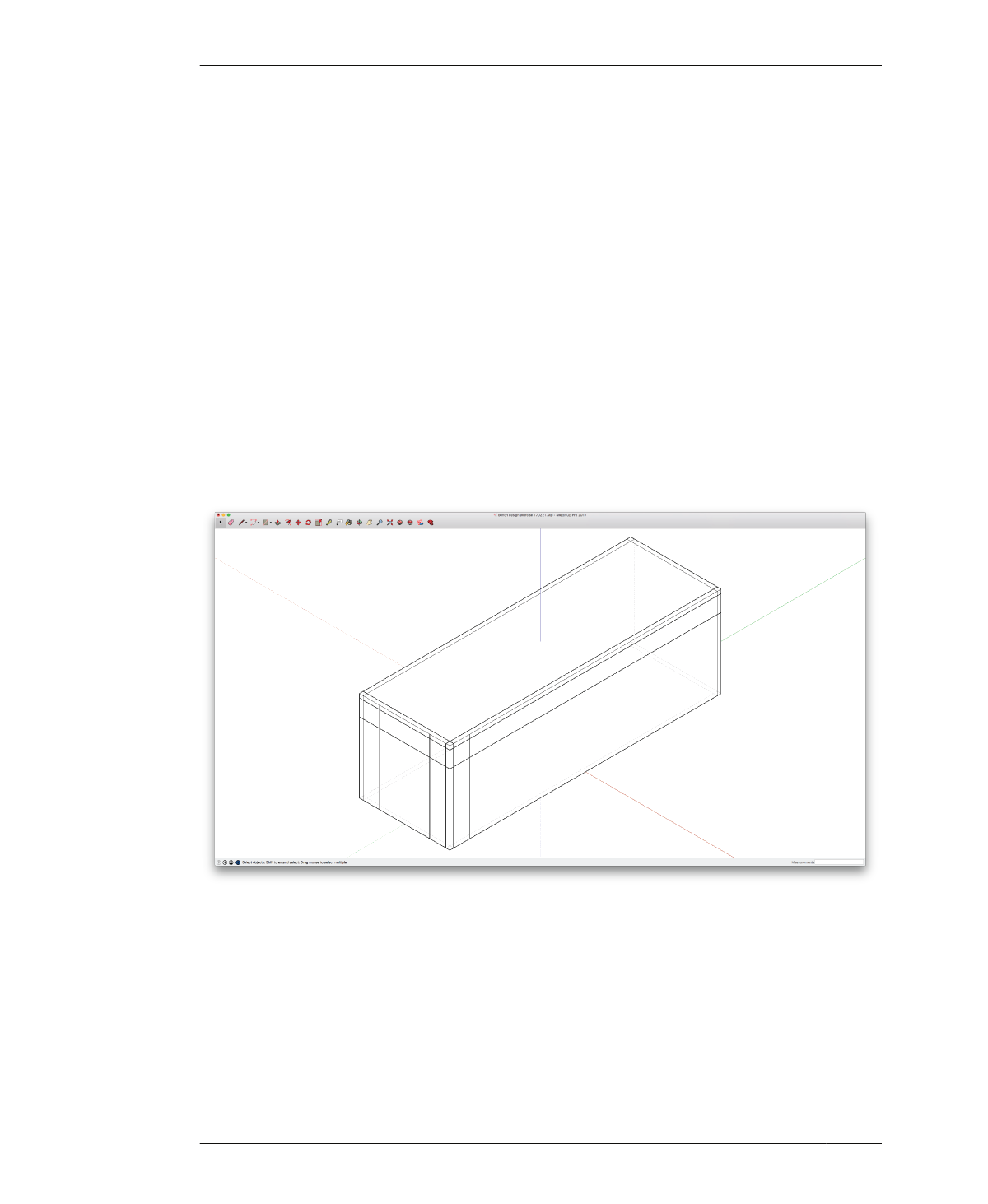
FIGURE 4-8
Reference lines for
beams and legs
USING REFERENCE LINES
USING REFERENCE LINES
With essential parts modeled and organized
into the basic shape of the bench, we can now
begin adding finer details to it. Let’s first lighten
the bench to make it less boxy in appearance,
which has the added benefit of requiring less
material. We’ll achieve this by shaping the
front, back, and sides to form four conventional
“legs” for the bench to stand on.
In addition to the “legs,” we’ll need to shape
“beams” across the top of each part. These
beams will connect the legs, forming a struc-
tural frame that’s strong enough to support sit-
ters of all kinds. In the next steps, you’ll modify
these four parts into an upside down “U-shape”
that will lighten your bench and maintain its
structural integrity.
To model our bench legs, we first need to deter-
mine a dimension that is great enough to offer
structural support, while preserving our prefer-
ence for lightness. We’ll choose 4″ (100mm) for
both beam depth and leg width, so the entire U-
shape is a consistent width. Before you begin
modifying the parts, it will help to draw a series
of temporary reference lines, which will allow
you to model with precision, consistency, and
efficiency (Figure 4-8). Later in this exercise,
you will use reference lines as you model join-
ery on every part.
98
DESIGN FOR CNC
